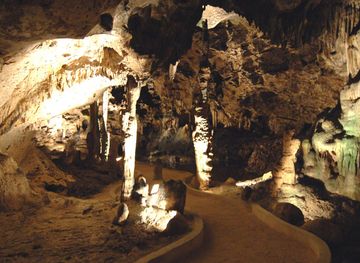
Curacao: A Caribbean Jewel Full of Color and Culture
Discover Curacao, where vibrant culture, stunning beaches, and historic charm come together to create a Caribbean paradise like no other.
Curacao is a captivating island in the Caribbean Sea, known for its rich blend of cultures, vibrant architecture, and stunning beaches. As part of the Lesser Antilles, it offers a unique travel experience with its Dutch colonial heritage, reflected in the bright pastel-colored buildings of its capital, Willemstad. The city itself is a UNESCO World Heritage site, brimming with history and charm. From the bustling markets to the serene beaches, Curacao caters to a wide array of interests. Visitors can explore the island's natural beauty by diving into its crystal-clear waters, home to coral reefs and diverse marine life. For those who prefer to stay on land, the island offers scenic hiking trails, wildlife encounters, and picturesque views from spots like the Christoffel National Park. Curacao's cultural diversity is another highlight, with influences from Africa, Europe, and the Caribbean. This rich tapestry is evident in the island's music, dance, and cuisine. Local dishes like Keshi Yena and fresh seafood are must-tries for any food lover. The island also hosts several festivals throughout the year, celebrating everything from its vibrant carnival to its jazz heritage, ensuring there's always something exciting happening. In addition to its natural and cultural attractions, Curacao is known for its warm and welcoming people. Whether you're wandering through the colorful streets of Punda, relaxing on the sandy shores of Mambo Beach, or exploring the island's hidden gems, you're sure to be greeted with a smile and a sense of genuine hospitality.
Local Tips
- Currency: The official currency is the Netherlands Antillean guilder (ANG). U.S. dollars are also widely accepted.
- Language: Papiamentu, Dutch, Spanish, and English are commonly spoken, making communication easy for most travelers.
- Best Time to Visit: The island enjoys a warm climate year-round, but visiting between May and November can offer fewer crowds and better rates.
- Transportation: Renting a car is recommended to explore the island at your own pace, as public transportation can be limited.
- Electricity: The voltage is 127 V, and the frequency is 50 Hz. Make sure to bring a suitable adapter for your devices.
- Local Etiquette: It's customary to greet people with a handshake. Also, dressing modestly is appreciated when visiting religious sites.
- Safety: Curacao is generally safe, but like any travel destination, it's wise to stay aware of your surroundings and keep valuables secure.
Curacao: A Caribbean Jewel Full of Color and Culture
Curacao is a captivating island in the Caribbean Sea, known for its rich blend of cultures, vibrant architecture, and stunning beaches. As part of the Lesser Antilles, it offers a unique travel experience with its Dutch colonial heritage, reflected in the bright pastel-colored buildings of its capital, Willemstad. The city itself is a UNESCO World Heritage site, brimming with history and charm. From the bustling markets to the serene beaches, Curacao caters to a wide array of interests. Visitors can explore the island's natural beauty by diving into its crystal-clear waters, home to coral reefs and diverse marine life. For those who prefer to stay on land, the island offers scenic hiking trails, wildlife encounters, and picturesque views from spots like the Christoffel National Park. Curacao's cultural diversity is another highlight, with influences from Africa, Europe, and the Caribbean. This rich tapestry is evident in the island's music, dance, and cuisine. Local dishes like Keshi Yena and fresh seafood are must-tries for any food lover. The island also hosts several festivals throughout the year, celebrating everything from its vibrant carnival to its jazz heritage, ensuring there's always something exciting happening. In addition to its natural and cultural attractions, Curacao is known for its warm and welcoming people. Whether you're wandering through the colorful streets of Punda, relaxing on the sandy shores of Mambo Beach, or exploring the island's hidden gems, you're sure to be greeted with a smile and a sense of genuine hospitality.
When is the best time to go to Curacao?
Landmarks we love in Curacao
-
Queen Emma Bridge, Curacao
-
Renaissance Mall & Rif Fort, Curacao
-
Curaçao Sea Aquarium, Curacao
-
Hato Caves, Curacao
-
Old Market, Curacao
-
Brión Square, Curacao
-
Museum Kura Hulanda, Curacao
-
Fort Beekenburg, Curacao
-
The Curaçao Museum, Curacao
-
Curacao Maritime History Museum / A treasure chest full of history, Curacao
-
Landhuis Bloemhof cultural center, Curacao
-
Curaçao Sign, Curacao
-
Forti Boka Sami, Curacao
-
Punda Love Heart, Curacao
-
Queen of the Most Holy Rosary Cathedral, Curacao































